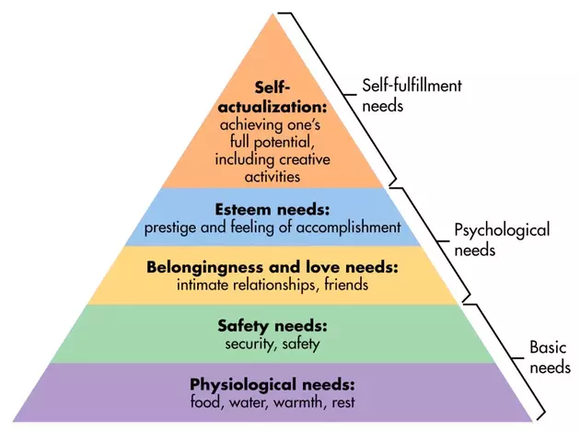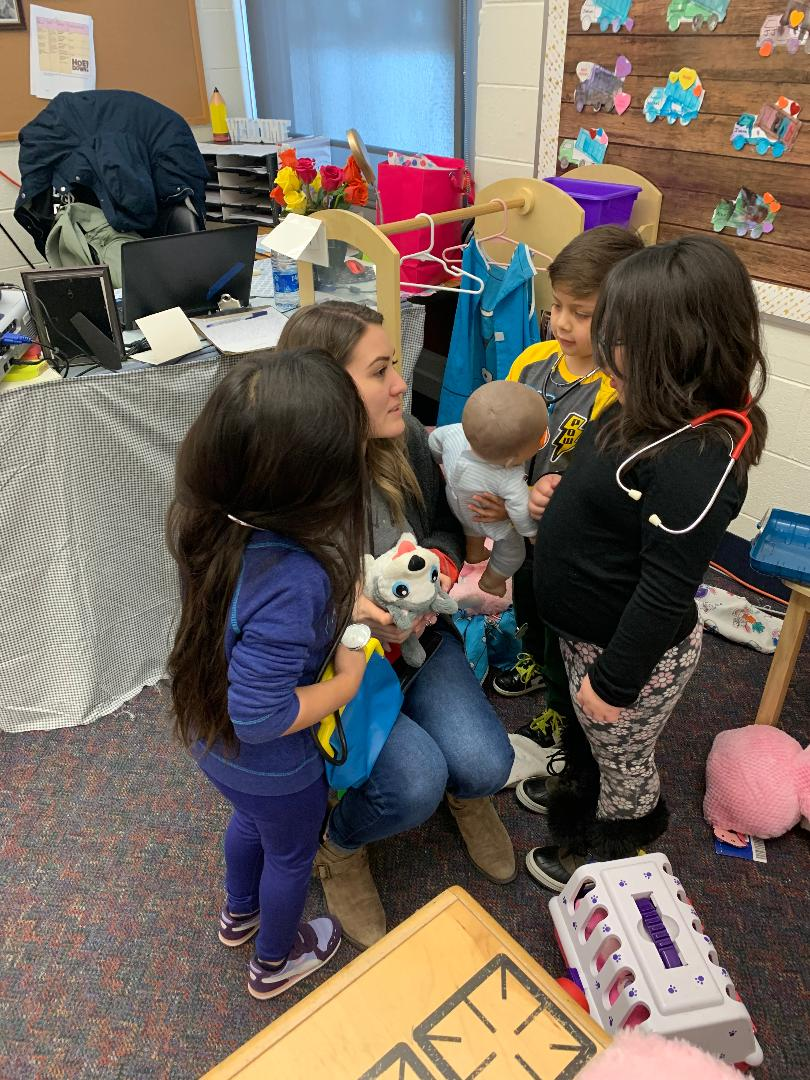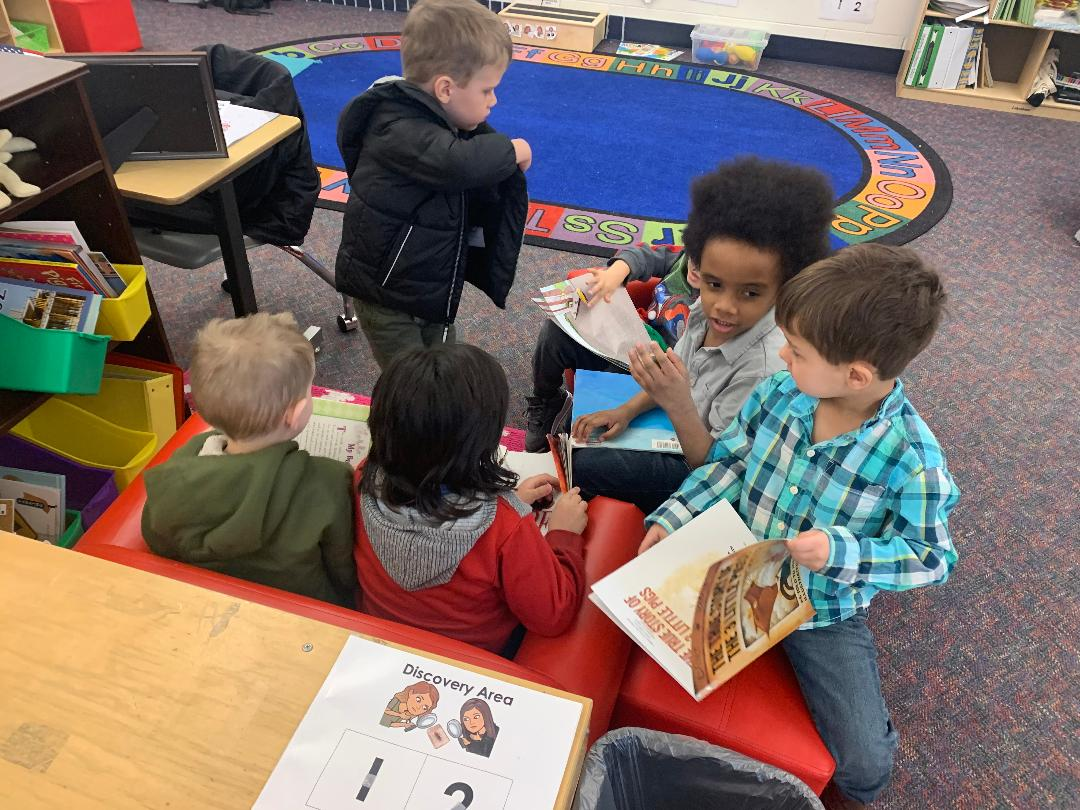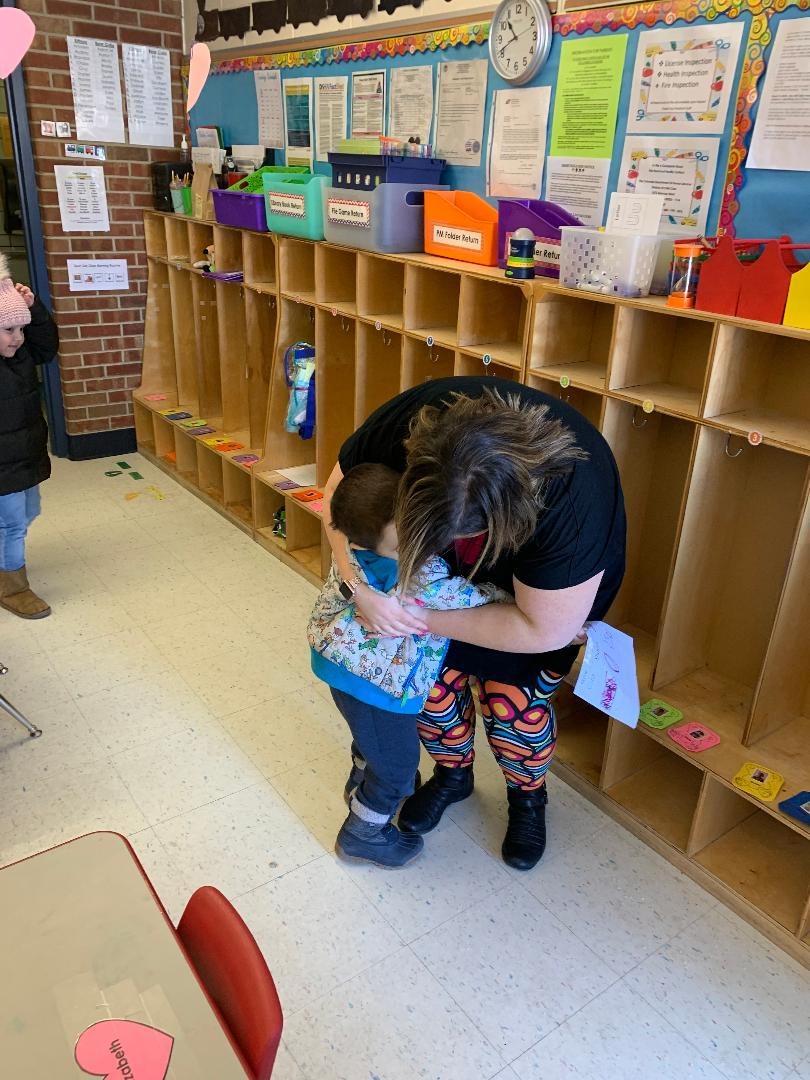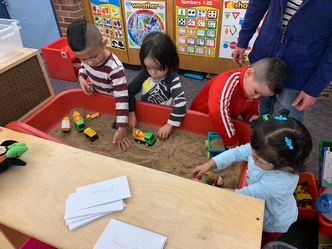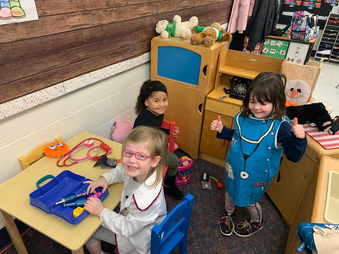The Mental Health and Well-Being of Our Children:
Reflections on Leading During COVID-19
Mariah Hofmeister
This past year in the Buell Early Childhood Leadership Program (BECLP) has been amazing and challenging and full of life. I have learned and lived and experienced new things, and I have experienced old things differently. I have let go as much as I have let come. I have paused and reflected and I dove in head first with an open heart and mind. I have learned more about myself as I have tried new things and taken new risks. I have felt both unconfident and confident, scared and brave, stressed and calm, heavy and light -as well as other polarizing emotions. However, these emotions have not been polarizing but fluid and infinite. The year is represented best as an infinity loop, as the experience keeps going and going, sometimes up and sometimes down. The only consistency has been the consistency of continually learning.

As our Buell experience suddenly shifted with COVID-19, I felt myself become sad and disappointed. I was getting comfortable and no longer felt the uncertainties that I had felt throughout the program. Things were beginning to feel more clear and less challenging. My relationships with others felt more comfortable and solid, both within BECLP and within my job. Around that same time I also found out I would not be returning to work for the rest of the school year due to COVID-19. I would not be with the children who I work hard to fight for. How was I supposed to support preschoolers and their mental health and behaviors online? Everything changing at once felt overwhelming. But life is full of ups and downs. Once I was able to pause and reflect on the changes, I grew to accept them. I started to think more about how I could utilize my passion for helping children and families in a different way through COVID-19.
As we have all continued to experience the pandemic I have become more aware of the inequalities that exist and how they have been exasperated due to COVID-19. Many children and families are suffering more now than ever. I worry about these families. I think about the children and wonder, “How are the children?” I have been passionate about helping children and families in early childhood for most of my career. I feel more helpless now as everyone has to isolate and I am not able to actually see these children and families. How are they feeling? Do they feel safe? Do they feel connected? Are parents able to provide their children what they need, economically and emotionally? It takes a village and families have lost their village. For this, I worry.
As we have all continued to experience the pandemic I have become more aware of the inequalities that exist and how they have been exasperated due to COVID-19. Many children and families are suffering more now than ever. I worry about these families. I think about the children and wonder, “How are the children?” I have been passionate about helping children and families in early childhood for most of my career. I feel more helpless now as everyone has to isolate and I am not able to actually see these children and families. How are they feeling? Do they feel safe? Do they feel connected? Are parents able to provide their children what they need, economically and emotionally? It takes a village and families have lost their village. For this, I worry.
Maslow’s Hierarchy of Needs
As a Social Worker and Early Childhood Mental Health Specialist, I am leaning into Maslow's Hierarchy of Needs as a framework in thinking of the experiences of children and families during COVID-19.
Physiological and safety needs: The bottom layer of this pyramid is physiological needs, which include food, water, warmth and rest. Currently, many families in the United States do not have enough food. Feed America projects that up to 18 million children will face food insecurities due to the impacts of COVID-19, significantly increasing the number of children who experience hunger. Many families have not been able to keep their home due to job loss and are now homeless. Unemployment rates have reached a record high, and as of May 21, 2020, “jobless claims totaled 38.6 million. That's roughly one out of every four people who were working in February, before the pandemic hit”. Homeless shelters and domestic violence shelters are limited or non-existent due to COVID restrictions. Where are these families going? What are these families doing? The physiological needs of many children are not being met right now. If a family cannot meet the basic needs of their children, how can they help their children feel safe and secure (the second tier of the pyramid)? Are the children safe at home with their parents? When the news says that it is not safe to leave your home, how are these children gaining a sense of security?
Belongingness and love needs: After basic needs come belongingness and love needs, such as the intimate relationships and friendships that help children thrive. Most children are only seeing their immediate family at this time. It takes a village to raise a child and most families are not seeing the rest of their village. Many children cannot see their grandparents, aunts and uncles, or other significant adults in their lives. Most children cannot see their teachers, who may be the most nurturing and safe relationship they have. They are not able to make those daily connections with friends that are so important to well-being.
Physiological and safety needs: The bottom layer of this pyramid is physiological needs, which include food, water, warmth and rest. Currently, many families in the United States do not have enough food. Feed America projects that up to 18 million children will face food insecurities due to the impacts of COVID-19, significantly increasing the number of children who experience hunger. Many families have not been able to keep their home due to job loss and are now homeless. Unemployment rates have reached a record high, and as of May 21, 2020, “jobless claims totaled 38.6 million. That's roughly one out of every four people who were working in February, before the pandemic hit”. Homeless shelters and domestic violence shelters are limited or non-existent due to COVID restrictions. Where are these families going? What are these families doing? The physiological needs of many children are not being met right now. If a family cannot meet the basic needs of their children, how can they help their children feel safe and secure (the second tier of the pyramid)? Are the children safe at home with their parents? When the news says that it is not safe to leave your home, how are these children gaining a sense of security?
Belongingness and love needs: After basic needs come belongingness and love needs, such as the intimate relationships and friendships that help children thrive. Most children are only seeing their immediate family at this time. It takes a village to raise a child and most families are not seeing the rest of their village. Many children cannot see their grandparents, aunts and uncles, or other significant adults in their lives. Most children cannot see their teachers, who may be the most nurturing and safe relationship they have. They are not able to make those daily connections with friends that are so important to well-being.
The majority of children right now do not have all three tiers of the bottom of Maslow’s Hierarchy of Needs. Physiological needs, safety, belongingness and love are all needed for true growth, esteem, and self-actualization to occur. I worry about how long all of this will last and the lasting impacts this will have on our children.
Mental Health and Parenting During COVID-19
There is a lot of controversy in the general public right now on what we should do during COVID. Some think we should all stay home as to not spread the virus, while others think we should start back to work so that the economy does not continue to suffer. Where are the conversations about mental health and trauma? I am very concerned about the mental health of those who are continuing to stay home. It is a privilege for those who have income to stay home, and it is also a privilege for those who feel safe to be home.
Studies show that there is an increase in child abuse and domestic violence during times of crisis, and this is a huge crises for many people. There has been a large increase in the amount of calls to mental health crisis lines in the United States since the start of the pandemic. “According to data from Colorado Crisis Services, its crisis hotline saw a 57% increase in calls in March 2020 compared to March 2019. March 2020 saw the highest volume of calls to the crisis hotline for a singular month, said Robert Werthwein, director of the Colorado Department of Human Services’ Office of Behavioral Health” (www.thedenverchannel.com). Another challenge is that people are not in the public eye. Children and victims of domestic abuse are in their homes with no contact and nobody to help them out of the situation. Job loss and financial hardship cause extra stress, and so does isolation.
Parenting is hard for everyone, but especially for those who have lost their support system. I worry about how parents are managing all of this. Once school is back in session are the children going to feel safe and secure returning to school? If they do not feel safe and secure in their homes right now, it may take them much longer to adjust back to school, to trust adults and to feel safe and secure. Are their parents talking to them about their own fears and how during the pandemic they cannot go into public? If they are, how do these small humans understand this and how will they understand when it is safe again? Are their parents super stressed and lacking good coping skills? Are children getting yelled at all of the time, or hurt, or witnessing one of their parents getting hurt? These are all concerns of mine. All of these experiences can be perceived as traumatic for children. Children who experience trauma may suffer side effects for the rest of their lives.
In going back to the infinity loop, there are ups and downs and positives and negatives to everything, and life is fluid. My hope through all of this is that the positives outweigh the negatives. When that is not the case, I hope the world can come together and help those most affected by this. As a leader in early childhood, I will continue to talk about early childhood mental health so that everyone is aware of how this manifests in young children. I will advocate for policies and supports to keep the mental health of children and families in the forefront of people’s minds. I encourage you to continue to ask yourselves, “how are the children?” If you cannot answer that question, please check in with them. Please keep the children in mind. They are our future.
Studies show that there is an increase in child abuse and domestic violence during times of crisis, and this is a huge crises for many people. There has been a large increase in the amount of calls to mental health crisis lines in the United States since the start of the pandemic. “According to data from Colorado Crisis Services, its crisis hotline saw a 57% increase in calls in March 2020 compared to March 2019. March 2020 saw the highest volume of calls to the crisis hotline for a singular month, said Robert Werthwein, director of the Colorado Department of Human Services’ Office of Behavioral Health” (www.thedenverchannel.com). Another challenge is that people are not in the public eye. Children and victims of domestic abuse are in their homes with no contact and nobody to help them out of the situation. Job loss and financial hardship cause extra stress, and so does isolation.
Parenting is hard for everyone, but especially for those who have lost their support system. I worry about how parents are managing all of this. Once school is back in session are the children going to feel safe and secure returning to school? If they do not feel safe and secure in their homes right now, it may take them much longer to adjust back to school, to trust adults and to feel safe and secure. Are their parents talking to them about their own fears and how during the pandemic they cannot go into public? If they are, how do these small humans understand this and how will they understand when it is safe again? Are their parents super stressed and lacking good coping skills? Are children getting yelled at all of the time, or hurt, or witnessing one of their parents getting hurt? These are all concerns of mine. All of these experiences can be perceived as traumatic for children. Children who experience trauma may suffer side effects for the rest of their lives.
In going back to the infinity loop, there are ups and downs and positives and negatives to everything, and life is fluid. My hope through all of this is that the positives outweigh the negatives. When that is not the case, I hope the world can come together and help those most affected by this. As a leader in early childhood, I will continue to talk about early childhood mental health so that everyone is aware of how this manifests in young children. I will advocate for policies and supports to keep the mental health of children and families in the forefront of people’s minds. I encourage you to continue to ask yourselves, “how are the children?” If you cannot answer that question, please check in with them. Please keep the children in mind. They are our future.
